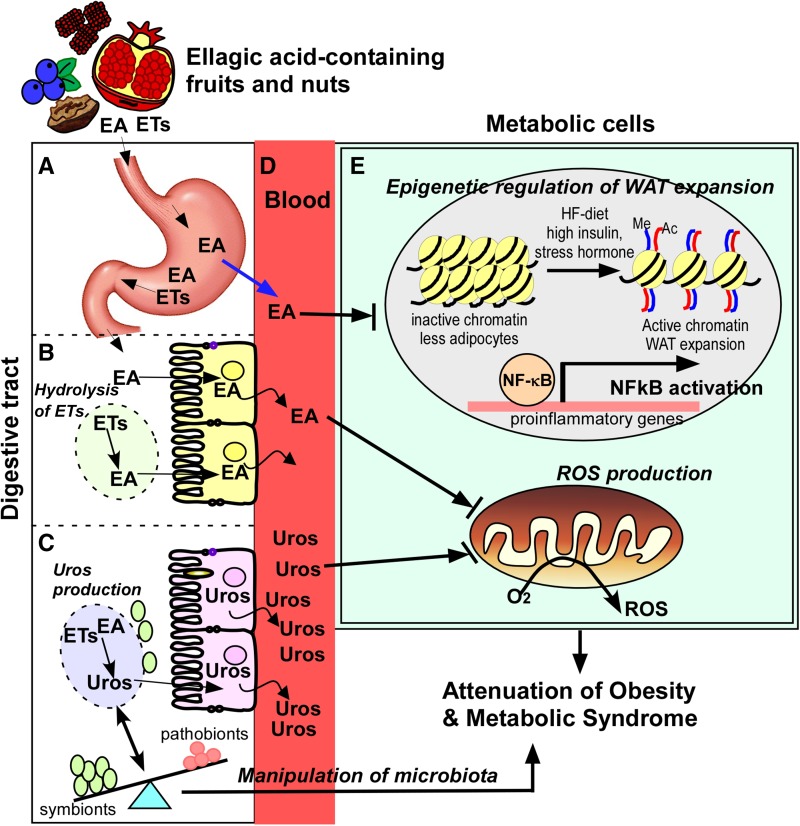FIGURE 2.
Working model explaining how the intake of EA-rich fruits and vegetables promotes metabolic benefits. A proportion of free EA from some fruits and nuts, such as raspberries, blueberries, walnuts, and pomegranates, will be absorbed in the stomach (A). EA that is released from the hydrolysis of ETs (dotted circle) is absorbed in the small intestine (B). Gut microbes metabolize the unabsorbed EA and ETs, generating different types of urolithins (dotted circle), which are more efficiently absorbed in the colon (C). It is suggested that EA and its metabolic derivatives may manipulate the microbiota, promoting the metabolic activities of hosts. As a result, EA can reach ∼0.1–0.4 μmol/L and urolithins can reach ∼2–10 μmol/L in circulation maximally (D). EA and its gut metabolites, urolithins, may play a synergistic role in regulating epigenetic factors to control white adipose tissue formation (i.e., histone acetylation and methylation levels), inhibiting NF-κB activation and attenuating ROS production, thereby promoting metabolic activities against diet-induced obesity (E). Ac, histone acetylation; EA, ellagic acid; ET, ellagitannin; HF, high fat; Me, histone methylation; ROS, reactive oxygen species; Uro, urolithin; WAT, white adipose tissue.

